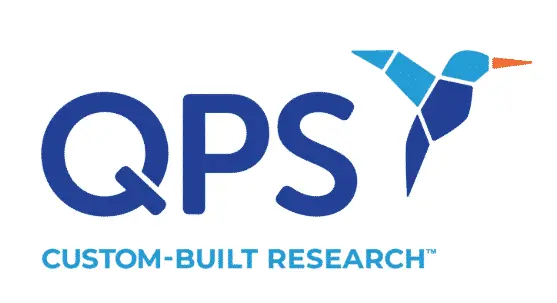Therapeutic oligonucleotides are important for altering targeted RNA pathways through a variety of mechanisms, making them a versatile tool in drug development. Understanding their ADME properties is a critical step in drug development because it will make us aware of the potential side effects certain oligo treatments may have. This allows us to create methods of avoiding toxic metabolites and ensuring the intended function of the drug is carried out.
Therapeutic Oligonucleotides FAQ
What are therapeutic oligonucleotides?
ASO (antisense oligonucleotides), miRNA (micro RNA), siRNA (small interfering RNA), and nucleic acid aptamers differ from small molecule pharmaceutics by size and polarity. The chemical structure of oligonucleotides (oligos) allows them to cross cell membranes to the active sites in the target organs. Once the oligo is bound to the target RNA in the cells, it affects the metabolism of the target RNA and related downstream process.
Why are they important?
Therapeutic oligonucleotides are an important new drug class designed to target protein translation, which interferes with a disease’s progression. This new drug modality was originally centered on rare diseases, such as Duchenne muscular dystrophy, hATTR amyloidosis, etc., but with better technology, therapeutic oligonucleotides are now being used to treat large population diseases, such as hypercholesterolemia, herpes B virus, Alzheimer’s disease, and more.
How are they detected and measured?
To determine the effectiveness of a drug, one must understand its ADME properties. That is, how much of the drug is being absorbed, remaining in the bloodstream, how much is distributed into the target sites, and how much is metabolized and eliminated, relative to the administered dose.
To evaluate the oligos ADME profile, the most common bioanalytical techniques are hybridization-ELISA and liquid chromatography high resolution mass spectrometry (LC‑HRMS). LC‑HRMS can simultaneously quantitate the administered drug and potential metabolites and qualitatively evaluate the metabolite’s structure.
What specifically do they tell us?
The results of LC-HRMS studies are used to calculate ADME properties. These parameters typically include absorption, distribution, metabolism, and elimination.
- Absorption describes how the drug travels from the site of administration to the target tissue(s). One measurable property of the absorption parameter is bioavailability via an area-under-the-curve (AUC) calculation for plasma concentration. Bioavailability is how much of the drug entered the circulatory system compared to how much was originally administered. This parameter is dependent on physicochemical properties such as solubility and permeability (how well the drug can passively penetrate the cell membrane and be actively taken up by the cells).
Oligos are rapidly transported from the site of administration (usually IV infusion or subcutaneous injection) to the target tissues (minutes to hours), rapidly eliminated from circulation and deposited in the tissues (half-life minutes to a few hours), but slowly eliminated from the tissues (half-life up to a few weeks).
- Distribution describes how well the drug spreads throughout the body. The drug is usually taken up by plasma protein and transported to the target organ(s).
Similar to small molecule therapeutics, optimum binding (not too tight nor inadequate) of the oligos to plasma proteins leads to higher bioavailability and decreases the likelihood of metabolism and elimination before reaching its intended receptor sites at the pharmacologic target.
- Metabolism usually occurs via enzymatic conversion of the administered drug into different components. It is important to study drug metabolism because it can potentially decrease the efficacy of the administered drug. Understanding which metabolites are formed over time and which exist concurrently helps improve our understanding of the administered drug and the potential toxicity related to metabolism.
Oligonucleotides, RNA, DNA, mRNA are metabolized at the phosphate backbone via endo-and exo-nucleases to shorter chain-mers. This is a natural process used to recycle the nucleotide base units for further use or to be excreted from the body. The principal metabolic pathway of modern therapeutics oligos is the sequential clipping of monomeric units via exonucleases. These metabolites can be pharmacologically active or inactive depending on the length and the sites of cleavage. Oxidative deamination or oxidative desulphation are frequently observed. Since the liver (first pass) and kidneys (renal elimination) typically have the greatest oligo concentration, the tissues from these organs (in parallel with plasma, urine, and feces) are good matrices to understand metabolism.
- Excretion is the process by which the drug is cleared from the body. Biliary excretion of the absorbed administered drug to the GI tract is a common way to eliminate higher molecular weight drugs. Renal excretion means the drug is cleared through passive filtration or secretion. The measurement of how much drug is excreted versus how much remains in the body is known as clearance.
Pharmacokinetics is seemingly consistent across species for most oligos; both in vitro and in vivo studies can be done on animal species to model the drug activity that would occur when administered to humans.
QPS is a GLP- and GCP-compliant contract research organization (CRO) delivering the highest grade of discovery, preclinical and clinical drug research development services. Since 1995, it has grown from a tiny bioanalysis shop to a full-service CRO with 1,100+ employees in the U.S., Europe and Asia. Today, QPS offers expanded pharmaceutical contract R&D services with special expertise in neuropharmacology, DMPK, toxicology, bioanalysis, translational medicine and clinical development. An award-winning leader focused on bioanalytics and clinical trials, QPS is known for proven quality standards, technical expertise, a flexible approach to research, client satisfaction and turnkey laboratories and facilities. Through continual enhancements in capacities and resources, QPS stands tall in its commitment to delivering superior quality, skilled performance and trusted service to its valued customers. For more information, visit www.qps.com or email info@qps.com.








